Erika Robuck's Blog, page 30
April 12, 2011
Review: The Kitchen Daughter
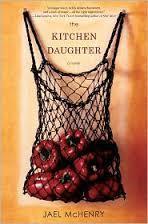
"I'm opening the silverware drawer for a spoon when I notice her. On the step stool in the corner of the kitchen, next to the refrigerator, sits Nonna. She is wearing a bright yellow Shaker sweater and acid-washed jeans. Nonna has been dead for twenty years. "
Jael McHenry, THE KITCHEN DAUGHTER
Today is the pub date of The Kitchen Daughter, by Jael McHenry. It was published by Gallery Books, is 272 pages, and has a fantastic cover. What's between the covers, however, is the real treasure.
Ginny Selvaggio is an exquisite cook and dutiful daughter. She also has Asperger's syndrome and can conjure up the dead with their handwritten recipes.
On the day of her parents' funeral, as she seeks comfort by cooking one of her deceased Italian grandmother's old recipes, the ghost of Nonna, herself, arrives to talk to Ginny and to warn her. Nonna's cryptic words, "Do no let her...", start Ginny on a mission to conjure other relatives and get to the bottom of a family mystery.
Ginny is one of the most endearing characters I've encountered in a long time, and McHenry is a master at capturing her voice and maintaining it throughout the novel. Watching Ginny's transformation within herself is wholly satisfying and believable, even as the ghosts of her dead family members lead her along the way.
McHenry's prose is clean, elegant, and compelling, and I finished the book in three nights. At times heartbreaking, others hopeful,The Kitchen Daughter serves up a unique and unforgettable helping of fiction that lingers long after the last word is served.This is an excellent debut novel, and Jael McHenry has earned herself a faithful reader.
If you enjoy books of magical realism like Garden Spells or Like Water for Chocolate, you will love The Kitchen Daughter.








April 9, 2011
Guest Blogging
I'm guest blogging at Writer Unboxed today on the idea of nous, or the shared art experience through time as inspiration. Please stop by and leave your thoughts.
http://writerunboxed.com/2011/04/09/finding-and-sharing-inspiration/








April 6, 2011
A Case for Twitter
Some recent excellent articles and blog posts about Twitter have inspired me to give my own plug for the social networking site. I'm going to tell you a little about why I think writers, specifically, should be on it, and then give you some easy, general pointers, mingled with a helping of my own personal biases.
WHAT IS TWITTER?
Twitter is a running status update in which you only have 140 characters to express yourself. It encourages brief, meaningful communication and an unbelievable opportunity to network with like-minded people and professionals. You follow people who interest you. Others follow you. Think of it as an after-work happy hour, twenty-four hours a day.
A CASE FOR TWITTER
How many times have you heard that writing is isolating? Well, guess what? It is.
Now, I live in a house with a husband, three boys under the age of eight, one dog, and six frogs. I have a large, local, extended family. My kids' school, sports, and church community is warm, diverse, and nurturing. I am tremendously blessed and never lonely.
I don't, however, interact with a lot of people in my day to day life with a passion for books and writing. There are rarely opportunities to have conversations about plot development, character inspiration, meaningful themes, and satisfying denouements. There are even fewer discussions about query letters, ebooks vs. paper books, and the perfect pitch. And I never get the opportunity to discuss that all important writer hang-up: favorite font.
I write all this not to illustrate what a HUGE nerd I am, but to tell you that I chat on Twitter about these very subjects every day with others who actually enjoy these topics. It's a win-win situation because I don't have to bore my "real life" friends, but I get the stimulation I need by addressing it online.
Whether you are a quilter, fisherman, poet, tattoo artist, therapist, personal trainer, or musician you will find people who share your passions and are eager to engage. And not only that, but you'll be able to network and grow professionally if you wish.
It's also worth mentioning some of the priceless professional opportunities I've had as a direct result of Twitter, including but not limited to: guest blogging at Writer Unboxed and Jane Friedman's blog, There Are No Rules, an introduction to my editor, and a scholarship to Donald Maass' Breakout Novel Intensive Workshop.
GETTING STARTED
It's easy to set up a profile at Twitter.com, though somewhat trickier to upload a picture that actually shows who you are. I personally feel you should use your first and last name, and a photograph of your face to identify yourself. Ambiguous names and non-human photos might put off followers and make it difficult to converse in that "happy hour" atmosphere. (Some of my Twitter BFFs have dog pictures or logos, however, and I still love them.)
In your profile and description, be sure to link up your website and/or blog if you have them, and provide a brief, catchy description of who you are. I rarely follow people without some sort of description or website because I assume (rightfully so or not) that they're creepy.
Once you have a profile, start searching for people to follow. Many of your favorite blogs and websites will have Twitter links, so click those to find people, and search lists of those you follow to see who they follow. Once you're comfortable start reading updates, following links, tweeting your own links, and joining the conversation.
WHAT NOT TO DO
Do NOT arrive on the Twitter scene by announcing your website, three self-published ebooks, and Facebook page. Do NOT post links to your book on Amazon every day with quotes from your favorite pages. All of that can come up later, infrequently, and when it feels natural.
WHAT TO EXPECT
You will work very hard for your first 50-75 followers (unless you're Charlie Sheen.) It will seem like no one cares about you in the beginning. Push through. Once you get a couple of regular Twitter "friendships" and conversation circles you'll pick up followers. Then, once you have a nice base, followers will start finding you first and frequently.
Be forewarned, however, that Twitter is addictive and can impede productivity.
Or, so I hear…
ADVANCED TWITTER
Once you become savvy, you'll learn how to utilize lists, hashtags (#), and various social media browsers (Tweetdeck, HootSuite, etc.) There are ways of linking your blogs and Facebook status updates to Twitter if you wish. All of that can be overwhelming at first, however, so keep it simple to start.
GREAT LINKS
Here are some articles and blog posts on how to use Twitter. Please include your own links and thoughts in the comments, and if you have any questions, feel free to post or email me directly.
A Writer's Guide to Twitter @InkyElbows
What Your Profile Picture Really Says About You @BTMargins
What are YOUR Twitter Do's and Don'ts? @aswinn
Strategic Tweeting for Authors Alan Rinzler








Some recent excellent articles and blog posts about Twitter have inspired me to give my own plug for the social networking site. I'm going to tell you a little about why I think writers, specifically, should be on it, and then give you some easy, general pointers, mingled with a helping of my own personal biases.
WHAT IS TWITTER?
Twitter is a running status update in which you only have 140 characters to express yourself. It encourages brief, meaningful communication and an unbelievable opportunity to network with like-minded people and professionals. You follow people who interest you. Others follow you. Think of it as an after-work happy hour, twenty-four hours a day.
A CASE FOR TWITTER
How many times have you heard that writing is isolating? Well, guess what? It is.
Now, I live in a house with a husband, three boys under the age of eight, one dog, and six frogs. I have a large, local, extended family. My kids' school, sports, and church community is warm, diverse, and nurturing. I am tremendously blessed and never lonely.
I don't, however, interact with a lot of people in my day to day life with a passion for books and writing. There are rarely opportunities to have conversations about plot development, character inspiration, meaningful themes, and satisfying denouements. There are even fewer discussions about query letters, ebooks vs. paper books, and the perfect pitch. And I never get the opportunity to discuss that all important writer hang-up: favorite font.
I write all this not to illustrate what a HUGE nerd I am, but to tell you that I chat on Twitter about these very subjects every day with others who actually enjoy these topics. It's a win-win situation because I don't have to bore my "real life" friends, but I get the stimulation I need by addressing it online.
Whether you are a quilter, fisherman, poet, tattoo artist, therapist, personal trainer, or musician you will find people who share your passions and are eager to engage. And not only that, but you'll be able to network and grow professionally if you wish.
It's also worth mentioning some of the priceless professional opportunities I've had as a direct result of Twitter, including but not limited to: guest blogging at Writer Unboxed and Jane Friedman's blog, There Are No Rules, an introduction to my editor, and a scholarship to Donald Maass' Breakout Novel Intensive Workshop.
GETTING STARTED
It's easy to set up a profile at Twitter.com, though somewhat trickier to upload a picture that actually shows who you are. I personally feel you should use your first and last name, and a photograph of your face to identify yourself. Ambiguous names and non-human photos might put off followers and make it difficult to converse in that "happy hour" atmosphere. (Some of my Twitter BFFs have dog pictures or logos, however, and I still love them.)
In your profile and description, be sure to link up your website and/or blog if you have them, and provide a brief, catchy description of who you are. I rarely follow people without some sort of description or website because I assume (rightfully so or not) that they're creepy.
Once you have a profile, start searching for people to follow. Many of your favorite blogs and websites will have Twitter links, so click those to find people, and search lists of those you follow to see who they follow. Once you're comfortable start reading updates, following links, tweeting your own links, and joining the conversation.
WHAT NOT TO DO
Do NOT arrive on the Twitter scene by announcing your website, three self-published ebooks, and Facebook page. Do NOT post links to your book on Amazon every day with quotes from your favorite pages. All of that can come up later, infrequently, and when it feels natural.
WHAT TO EXPECT
You will work very hard for your first 50-75 followers (unless you're Charlie Sheen.) It will seem like no one cares about you in the beginning. Push through. Once you get a couple of regular Twitter "friendships" and conversation circles you'll pick up followers. Then, once you have a nice base, followers will start finding you first and frequently.
Be forewarned, however, that Twitter is addictive and can impede productivity.
Or, so I hear…
ADVANCED TWITTER
Once you become savvy, you'll learn how to utilize lists, hashtags (#), and various social media browsers (Tweetdeck, HootSuite, etc.) There are ways of linking your blogs and Facebook status updates to Twitter if you wish. All of that can be overwhelming at first, however, so keep it simple to start.
GREAT LINKS
Here are some articles and blog posts on how to use Twitter. Please include your own links and thoughts in the comments, and if you have any questions, feel free to post or email me directly.
A Writer's Guide to Twitter @InkyElbows
What Your Profile Picture Really Says About You @BTMargins
What are YOUR Twitter Do's and Don'ts? @aswinn
Strategic Tweeting for Authors Alan Rinzler








March 30, 2011
Writers, Read
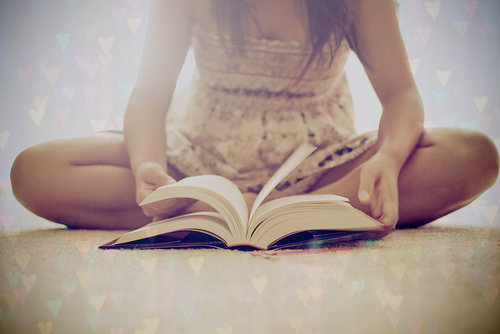
"Read, read, read! Read everything – trash, classics, good and bad; see how they do it. When a carpenter learns his trade, he does so by observing. Read! You'll absorb it. Write. If it is good you'll find out. If it's not, throw it out the window."
*Faulkner's Advice to Writers
I'm a book junkie. I'm always reading at least three at a time: my own (for revisions), a spiritual book (for the revision of my soul), and a book in the genre I write (historical fiction.)
I have to. I can't help myself. I'm addicted and obsessed. From paper books to ebooks, magazines to newspapers, blogs and devotionals, I can't get enough words. I need words like nourishment, exercise, breathing.
Time and again, I find authors asking for recommendations of the best craft and style books for writing, and I reply with the old standby's ON WRITING, BIRD BY BIRD, etc. But really, the best reading a writer can do is of popular, contemporary works in his or her own genre. Reading these books skillfully demonstrates technique in action. How did the writer start the action? How did the author weave in backstory, setting, the central problem of the story? How is figurative language used? Is the theme clear? How are chapters started and ended? What is the format of the book? The point of view?
These are all tremendously important questions and textbook answers can be found in some of the best craft workbooks on the market, but there's nothing like experience to best teach lessons. Experience these elements of style embedded in the fiction and they will become more of a natural, organic part of your process than any workbook checklist.
My friend, Michael Neff, at Algonkian Novel Workshops (which I give my highest endorsement) recommended that writers physically write long passages from our favorite authors as a tactile way to experience the kind of prose we want to create. I've found this exercise extremely helpful, in addition to being a somewhat therapeutic way to interact with words away from the blinking cursor on the screen.
How about you? What are some of the most important books you've read to your writing process? Are manuals on craft and style the most helpful to your writing, or is fiction? I'd love to hear your thoughts and recommendations.
*Photo courtesy of Elements Of Persuasion at DeviantArt.com.
*Quote from thisrecording.com








March 24, 2011
Review: All Different Kinds of Free
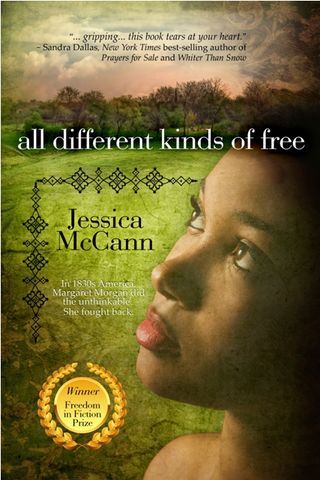
All Different Kinds of Free by Jessica McCann will be published on April 1, and is 260 pages. I received a galley for review from the publisher, and I couldn't put it down.
ADKF is the story of how the comfortable life of free woman of color, Margaret Morgan, is irrevocably altered when the widow of her former owner sends a bounty hunter to reclaim her and her children as property to be sent to auction. What follows is a series of horrific events that crush and destroy a family, but never the spirit of the courageous, honorable, and remarkable Margaret.
I had never heard Margaret Morgan's story or the landmark case of Prigg vs. Pennsylvania that contributed to the rumblings leading up to the Civil War. I've also never before read such detailed, heart-rending accounts of slave auctions or injustice against free people of color in the nineteenth century. McCann perfectly balances history and story, and her cast of characters is unforgettable.
There is a great new voice in historical fiction, and it is Jessica McCann.








March 20, 2011
Review: Room
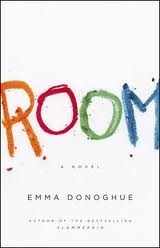
"Ma standing beside Lamp and everything bright, then snap and dark again. Light again, she makes it last three seconds then dark, then light for just a second. Ma's staring up at Skylight. Dark again. She does this in the night, I think it helps her get to sleep again. "
Emma Donoghue, ROOM
Room, by Emma Donoghue, was published in September of 2010 and is 336 pages. It is one of the New York Times' Best Books of 2010, and has earned top spots on many lists and reviews. I heard from several friends that they read it in one to two sittings so I had to see what the hype was about.
Room is the story of five-year-old Jack who has lived his entire life with his mother in an 11 X 11 room. To him it is all he's ever known, but his mother slowly reveals to Jack that it is a prison that they need to escape. From middle of the night morse-code light flickers, to the "Scream" Ma and Jack do every afternoon, it quickly becomes clear that Ma feels if they don't find a way to escape, they will die.
I don't want to spoil Room by writing too much about the plot, though I'm dying to discuss it with others. I will say that it's narrated by five-year-old Jack, and truly remarkable how Donoghue is able to sustain the child's voice convincingly, while revealing the horrible truths of the situation as a child would come to understand them. I originally didn't think I could read a book with a premise like this, but I absolutely loved it. While it is difficult to read at times, the overall message and journey in Room make it well worth your time.
I read Room in two nights. It is one of the most terrifying, absorbing, intriguing, yet hopeful books I've ever read. I highly recommend it.
Have you read ROOM? If so, what did you think? If not, do you think you'll give it a try?








March 17, 2011
Going With Tradition
Some of you have recently asked why I've decided to try the traditional route to publishing HEMINGWAY'S GIRL after self-publishing RECEIVE ME FALLING. Here's why I made my decision.
SELF PUBLISHING
I self-published RECEIVE ME FALLING for a number of reasons. It was very hard for a first time novelist with no other publishing credits or audience of any kind to find an agent, especially when that novel crossed genre lines. I felt very passionately about the story, however, and had a number of friends and book clubs asking to read it. I also knew that since the book was partially set in Annapolis, I'd be able to market it successfully close to home. I knew I'd have to work very hard marketing the book whether I had a traditional publisher or not, so I decided to self-publish, see what kinds of sales and reviews I could get, and then try to get an agent in the future if I met success.
I've been very pleased with my decision and feel very thankful for the readers and book clubs who have so enthusiastically supported me and my book. I also couldn't have done it without the best husband, kids, and family ever.
THE NEXT NOVEL
In the meantime, I started working on a second novel set in Hemingway's Key West, started blogging, and started expanding my platform in writing by guest blogging, hosting litchats on Twitter, joining various writing organizations, and attending lots of writing conferences. After about two years of writing, revising, and editing based on personal and professional editor feedback, I felt that HEMINGWAY'S GIRL was ready for publication.
I thought long and hard about whether or not I wanted to self-publish. On the plus side, the book would be ready to sell within a couple of months, the book clubs I attended were eager to read another novel by an author who visited them, and I had great results with local book stores (indie and chain) who were willing to stock future novels for me. On the minus side, distribution of paper books was a challenge. I also felt that HEMINGWAY'S GIRL had much broader geographic appeal that my first novel, so I wanted it in book stores nationally, or even internationally. Finally, no matter how many great reviews or positive reader letters I received, I confess that I wanted professional validation.
THE FUTURE OF PUBLISHING & MY DECISION
Something else is weighing on my mind. With the simple ebook publishing packages currently available, I foresee a flood of inferior, self-published books hitting the virtual shelves. There's not going to be a lot of quality control out there, and I think that readers are going to look to tried and true publishers for a polished product. I want my second book in that camp.
There are no guarantees. Even with an agent, finding an editor at a publishing house can be a challenge. Even finding an editor doesn't make the book in print a guaranteed outcome. All I can do is work as hard as I can to write the best book I can, and pray for a little luck.








March 16, 2011
Two Book Recommendations
Lately, I've been reading a lot of heavy historical fiction and gothic page turners with ambiguous endings. While I love these kinds of books, I do like to tread in other waters from time to time.
I had the recent privilege of reading two books by Twitter friends, and I'd like to share them with you if you're looking for a read somewhat more lighthearted and uplifting than my last few recommendations.
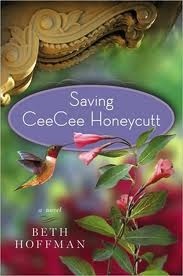
The first is SAVING CEE CEE HONEYCUTT by Beth Hoffman. It was published in January of 2010 and is 320 pages of sweet, Southern charm. It is the story of young Cecelia, sent to Savannah, Georgia in 1967 to live with her great-aunt Tootie, following the death of her mentally ill mother. Cee Cee's friendship with Tootie's housekeeper, Oletta, and the colorful, eccentric group of women that parade through Cee Cee's new sweeping Southern home teach her about the power of love, forgiveness, and starting anew.

My second recommendation came from a Goodreads giveaway: THE BIRD SISTERS by Rebecca Rasmussen. The book is 287 pages and will be released on April 12, 2011. It's told in two time periods and recounts how the lives of sisters Twiss and Milly were forever changed from the events of one hot Wisconsin summer when their cousin Bett came to visit.
Both of these novels have memorable characters and satisfying conclusions. Hoffman and Rasmussen deliver a fine blend of historical and women's fiction that touched my heart even after I finished reading.








March 15, 2011
What's a Literary Agent?
I've gotten a number of emails over the past week from non-writer friends that read, "Congratulations on your agent! Now what does that mean?" As someone who's been absorbed in this process for nearly a decade I sometimes forget that others don't eat, sleep, and breathe publishing, so thank you for those of you who've asked. Below and in future posts, I will VERY GENERALLY walk you through the process. Keep in mind that I'm only speaking for fiction since non-fiction is a very different animal.
Once an author has a completed manuscript that she would like others to read on a large scale (and has edited and revised that manuscript to death based on feedback from savvy, critical eyes outside of her household) it's time to find a publisher. There are three basic choices (and a million offshoots): self publishing, small press publishing, or large house publishing.
Self and small press publishing do not require an agent. Large publishers generally do require an agent. An agent is an advocate for the author and is able to use her experience and connections to help authors navigate all aspects of publishing, including: providing editorial feedback on a manuscript, finding an editor at a publishing house as passionate about the work as the agent and author, handling contract negotiations with publishers, selling foreign, film, or other subsidiary rights, and many more specialties.
I had many great experiences self-publishing my first novel, Receive Me Falling, and I'm very glad I did it. RMF had a lot of interest in my hometown, Annapolis, because it was partially set there, so grassroots marketing made sense. For my current novel Hemingway's Girl, however, I wanted to reach a larger audience. In truth, I also wanted some sort of external professional validation.
I researched agents, paying particular attention to those who had a keen interest in historical fiction, and was beyond thrilled when my top pick, Kevan Lyon, offered to represent me. It was a dream come true when I got the call from her, and I still get a thrill every time I think of it.
I'm currently working on a final set of revisions with Kevan. Then, with the help of her agency partner, Jill Marsal, we'll craft a pitch letter. Kevan will pitch my project to editors at publishing houses to try to find a good match for the book and get me started on the process of working with a large house.
The only downside to this set up is the time it will take for Hemingway's Girl to become available. First we have to find a publisher (in this increasingly difficult market), and then it usually takes about eighteen months before the book hits the shelves. Holding Hemingway's Girl back from my wonderful readers who keep asking for it is a challenge.
I've always used this blog to talk about my writing process and experiences with self-publishing , and I'll continue to talk about the process now that I'm trying traditional publishing. I want to formally thank my readers and book clubs for their interest and enthusiasm. Please don't hesitate to ask questions if you have them, and thank you for taking this journey with me.











